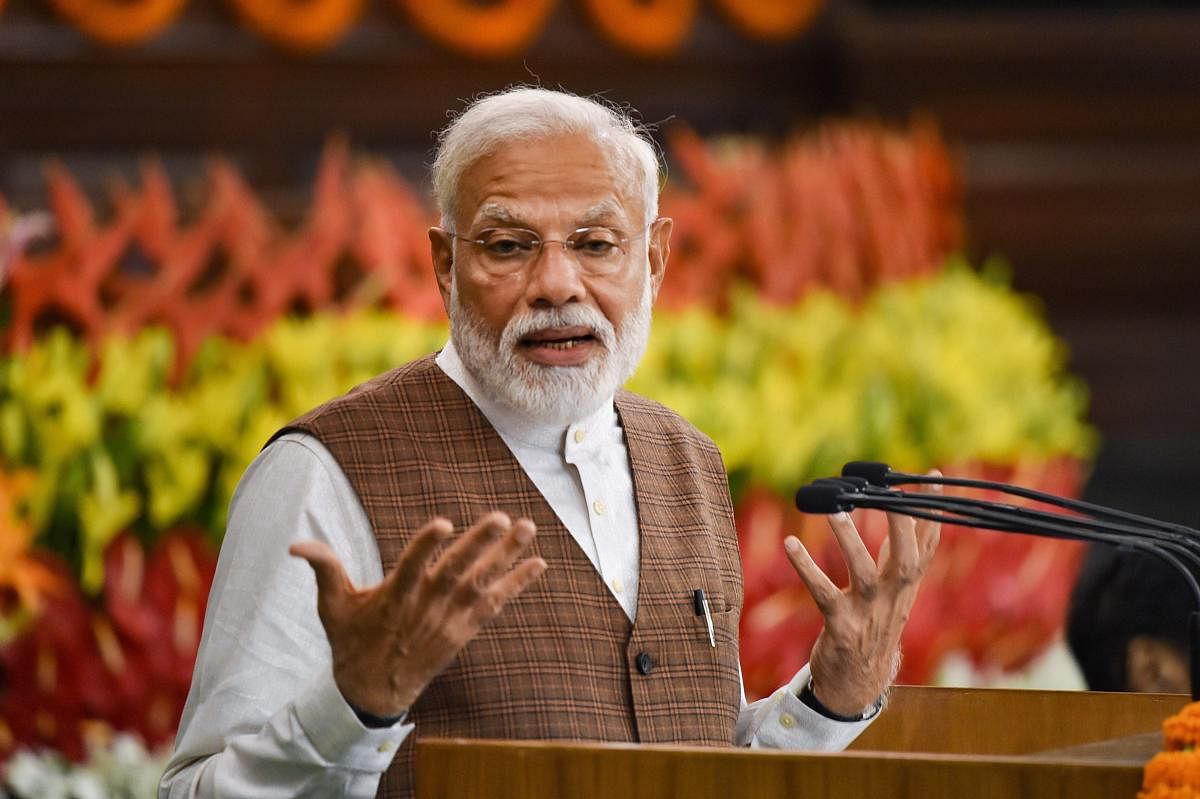
Prime Minister Narendra Modi stunned the nation when he introduced some striking economic reforms soon after taking over in 2014. Jan Dhan Yojana, Aadhaar, the law against benami properties and bankruptcy code came within two years of his first innings, winning him accolades in India and abroad. Then came demonetisation in November 2016, when he declared 86% of India’s currency in circulation illegal, which brought to an end the lifeline of India’s economy – its informal sector that took care of over 80% employed people in India. Critics called it the most polarising reform the country has ever had. That was a reckless decision but the government and the prime minister never owned up. It neither addressed the black money problem nor did it help the digital economy to take off – the two main claimed aims of note ban. Albeit, it led to a slowdown in almost every sector of production and thoroughly weakened the economy, leaving Modi on a sticky wicket as he entered his second innings.
Now that the Prime Minister has come back with a resounding majority, the political risks have been reduced for the next five years. This has given him ample space to address economic woes. Economists are expecting that Modi will resort to the stimulus to kick start the economy. Some have suggested a 100-day action plan that includes measures to boost agriculture credit and revive the farm sector, stem the drag on consumption and recapitalise public sector banks to spur capital expenditure.
A key component of NDA’s 100-day action plan should be measured to prime the economy and kick start consumption, says Elara Capital.
Banks, especially those in the public sector are in bad shape. They are plagued with higher corporate slippage and have recorded lower profits and losses in some instances. While the revival of consumption will give job boost, banking sector reform will free up capital for further investment.
The government has worked hard on policies at both the macro and micro levels. At the micro level, direct action has been taken in terms of provisions for electricity, LPG cylinders, toilets, housing access, direct benefit transfers, insurance. At the macro-economic level, however, the situation has been mixed. Land, labour, farm sector, jobs, banking, state finances, tax reforms, and disinvestment need a push.
According to Care Ratings, the government must look internally and fill up all the vacant positions. This can hold good for the entire public sector. For private sector employment generation, the government needs to focus on the SME segment as well as start-ups to increase opportunities. Focus on ‘Make in India’ for both local requirements as well as plugging into the global trade value chain, which could utilise disruption caused by US-China dispute to move manufacturing jobs to India, can be the solution. India needs to ensure that core manufacturing takes place and not just an assembly of components.
Direct tax reforms
Another area waiting for reforms is direct taxes. The main budget must also look at reducing tax rates which can help in increasing consumption and reduce corporate tax to increase investment. The work is already in progress on reviewing Goods and Services Tax (GST) rates. Bringing petrol and diesel in the ambit of GST has been the industry’s demand for a long time but the government is less likely to do so, as it not only weakens the Central finances but also that of the states.
However, economists have warned that in doing so, Modi should restrain from taking any step that might jeopardise the autonomy of the central bank as that would cause long-term harm to the country as against demonetisation that did a short and medium term disruption.
The government and the Reserve Bank of India are already at loggerheads on at least two issues related to banking reforms. On one hand, the government has been nudging the RBI to relax prompt corrective action (PCA) norms against banks, on the other hand, it is asking the central bank to give strong liquidity support to struggling NBFCs. The relaxations have started in a small measure under the new Governor Shaktikanta Das.
The government has also set up a committee under former RBI Governor Bimal Jalan to look into RBI’s capital framework in order to release more money from its reserves to the government coffers. That will not just weaken its finances but will also give the central bank a bad name abroad and hit its credit rating.
After the initial euphoria that will die down eventually, markets and investors will be looking for the policy initiatives that the government takes to bring back India on the higher growth path. Global rating agency Moody’s has already said that any credit implication of the outcome of general elections will be determined by the policies adopted by the government in the next few years. Among other things, the rating agencies will also look for fiscal consolidation by the government, which has deviated from its path in 2018-19, though, only by a small amount. Moody’s had upgraded India’s rating to ‘Baa2’ in 2017 from ‘Baa3’.
